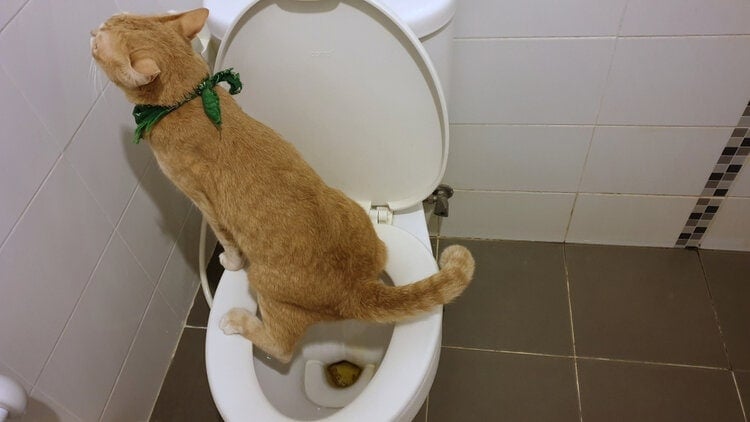Potential Risks of Flushing Cat Poop Down Your Toilet - Tips for Safer Handling
Potential Risks of Flushing Cat Poop Down Your Toilet - Tips for Safer Handling
Blog Article
They are making several good points regarding Don’t flush cat feces down the toilet in general in this article in the next paragraphs.

Introduction
As pet cat owners, it's important to be mindful of exactly how we take care of our feline good friends' waste. While it may seem hassle-free to flush feline poop down the commode, this technique can have harmful effects for both the setting and human wellness.
Alternatives to Flushing
The good news is, there are more secure and a lot more accountable methods to throw away pet cat poop. Think about the complying with alternatives:
1. Scoop and Dispose in Trash
The most common method of disposing of feline poop is to scoop it into a biodegradable bag and toss it in the garbage. Make sure to use a specialized clutter scoop and take care of the waste without delay.
2. Use Biodegradable Litter
Opt for naturally degradable pet cat trash made from products such as corn or wheat. These clutters are environmentally friendly and can be securely thrown away in the trash.
3. Bury in the Yard
If you have a lawn, think about burying feline waste in an assigned location far from veggie gardens and water resources. Be sure to dig deep adequate to prevent contamination of groundwater.
4. Install a Pet Waste Disposal System
Purchase a pet waste disposal system especially designed for pet cat waste. These systems utilize enzymes to break down the waste, lowering smell and ecological influence.
Health and wellness Risks
In addition to ecological problems, purging feline waste can also pose health threats to human beings. Cat feces might include Toxoplasma gondii, a parasite that can create toxoplasmosis-- a potentially severe ailment, specifically for pregnant ladies and individuals with damaged immune systems.
Ecological Impact
Purging feline poop presents harmful pathogens and parasites into the water supply, presenting a significant threat to aquatic ecosystems. These pollutants can adversely impact marine life and concession water top quality.
Conclusion
Responsible animal possession expands past providing food and sanctuary-- it additionally involves correct waste administration. By avoiding flushing feline poop down the bathroom and going with alternative disposal techniques, we can minimize our environmental footprint and secure human health and wellness.
Why You Should NEVER Flush Cat Poop (and/or Litter) Down Your Toilet
The Problem with Litter
The main function of litter is to solidify and adhere to your cat’s waste. While this makes litter excellent for collecting cat poop and urine, it’s also the exact property that makes it a nightmare when flushed down the toilet.
Cat litter can and will clog pipes. There is non-clumping litter, but it’s still quite heavy and can build up in pipes. This is true even of supposed “flushable litter.”
The problems only compound when the litter is already clumped into cat waste. Toilet paper is among the more flushable things, and even too much of that will clog a toilet.
The Problem with Cat Poop
Sewers and septic systems are designed with human waste in mind. The microbes that help break down human waste don’t work on cat waste. Additionally, cat poop plays host to the parasite Toxoplasma gondii.
When flushed, this parasite can enter the environment in places it was never meant to, posing a risk to pregnant women, their unborn children, and other people with compromised immune systems. While it might not seem possible, flushing cat poop can indeed introduce this parasite to the public water supply.
These reasons are why, even if you’ve trained your cat to go on the toilet and flush, which is possible, it’s still not a good idea. Also, pregnant women and the immunocompromised shouldn’t change litter, either.
How to Handle Litter
The best way to handle litter is to simply put it in a plastic bag and place it in the trash. Avoiding environmental risks and possible plumbing damage is worth the extra effort.
You can also invest in devices that seal away your cat’s waste in a separate compartment, so you don’t have to change the litter nearly as often. They’re also safer for pet owners because they limit the possibility of Toxoplasma gondii exposure.
Disposing of litter the old-fashioned way will ensure you won’t have to worry about any issues that flushing the waste can potentially cause.
Take Care of Clogged Pipes with Stephens Plumbing, Heating & Air Conditioning
The reasons you should never flush cat poop down your toilet are numerous, but sometimes the inevitable happens despite your best efforts.
Stephens Plumbing, Heating & Air Conditioning is ready to help if you’re experiencing litter-blocked plumbing. Whether you need us in an emergency or want to schedule regular maintenance, we’re here for you.
https://www.stephensplumbing.net/bathroom-plumbing/never-flush-cat-poop-down-your-toilet/

Do you appreciate more info about How to Dispose of Cat Poop and Litter Without Plastic Bags? Give a remark directly below. We'd be delighted to know your ideas about this piece. We are looking forward that you visit us again later on. Remember to take the opportunity to promote this blog if you enjoyed reading it. Thank you for your time. Visit us again soon.
Check Us Out Report this page